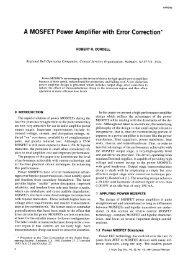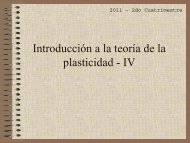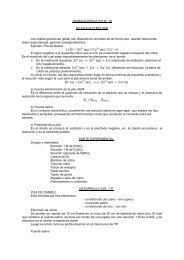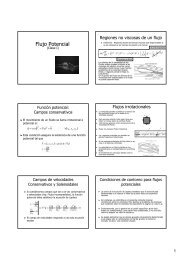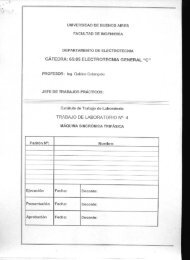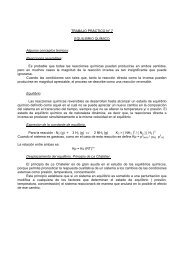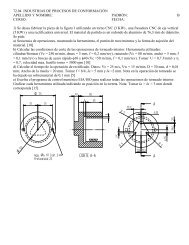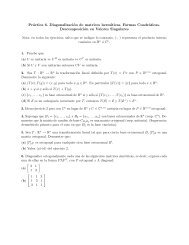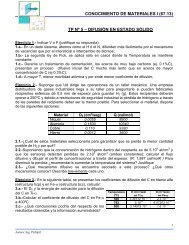Introduction to vector and tensor analysis
Introduction to vector and tensor analysis
Introduction to vector and tensor analysis
You also want an ePaper? Increase the reach of your titles
YUMPU automatically turns print PDFs into web optimized ePapers that Google loves.
n.<br />
f = σ t · n<br />
A <strong>tensor</strong> often associated with the stress <strong>tensor</strong> is the strain <strong>tensor</strong>, U, that<br />
specifies how a strained material is dis<strong>to</strong>rted ∆u in some direction ∆r<br />
∆u = U · ∆r<br />
We shall be more specific on these physical <strong>tensor</strong>s later.<br />
3.2 Outer product<br />
The outer product a ⊗ b or simply ab between two vec<strong>to</strong>rs a <strong>and</strong> b is a <strong>tensor</strong><br />
defined by the following equation, where c is any vec<strong>to</strong>r<br />
(ab)(c) = a(b · c) (3.4)<br />
In words, for each c the <strong>tensor</strong> ab associates a vec<strong>to</strong>r in the direction of a <strong>and</strong><br />
with a magnitude equal <strong>to</strong> the projection of c in<strong>to</strong> b. In order <strong>to</strong> call the object<br />
(ab) a <strong>tensor</strong> we should verify that it is a linear opera<strong>to</strong>r. Using the definition,<br />
Eq. (3.3), allows us <strong>to</strong> “place the brackets where we want”<br />
(ab) · c = a(b · c),<br />
which will ease the notation. Now, demonstrating that (ab) indeed is a a <strong>tensor</strong><br />
amounts <strong>to</strong> “moving brackets”:<br />
(ab) · (mc) = a(b · (mc)) = ma(b · c)<br />
= m(ab) · c<br />
(ab) · (c + d) = a(b · (c + d)) = a(b · c) + a(b · d)<br />
= (ab) · c + (ab) · d<br />
(3.5)<br />
We note that since the definition, eq. (??) involves vec<strong>to</strong>r operations that<br />
bear no reference <strong>to</strong> coordinates/components, the outer product will itself be<br />
invariant <strong>to</strong> the choise of coordinate system. The outer product is also known<br />
in the litterature as the <strong>tensor</strong>, direct, exterior or dyadic product. The <strong>tensor</strong><br />
formed by the outer product of two vec<strong>to</strong>rs is called a dyad.<br />
3.3 Basic <strong>tensor</strong> algebra<br />
We can form more general linear vec<strong>to</strong>r opera<strong>to</strong>rs by taking sum of dyads. The<br />
sum of any two <strong>tensor</strong>s,S <strong>and</strong> T, <strong>and</strong> the multiplication of a <strong>tensor</strong> with a scalar<br />
m are naturally defined by<br />
(S + T) · c = S · c + T · c<br />
(mS) · c = m(S · c).<br />
31<br />
(3.6)



